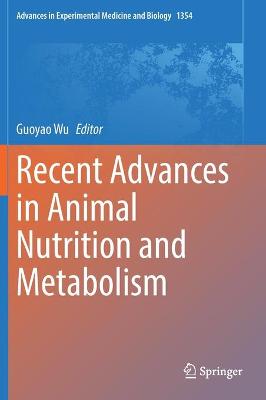Advances in Experimental Medicine and Biology
1 primary work
Book 1354
Recent Advances in Animal Nutrition and Metabolism
This book covers hot topics in the nutrition and metabolism of terrestrial and aquatic animals, including the interorgan transport and utilization of water, minerals, amino acids, glucose, and fructose; the development of alternatives to in-feed antibiotics for animals (e.g., swine and poultry); and metabolic disorders (or diseases) resulting from nutrient deficiencies. It enables readers to understand the crucial roles of nutrients in the nutrition, growth, development, and health of animals. Such knowledge has important implications for humans.
Readers will also learn from well-written chapters about the use of new genome-editing biotechnologies to generate animals (e.g., cows and swine) as bioreactors that can produce large amounts of pharmaceutical proteins and other molecules to improve the health and well-being of humans and other animals, as well as the growth and productivity of farm animals. Furthermore, the book provides useful information on the use of animals (e.g., cattle, swine, sheep, chickens, and fish) as models in biomedical research to prevent and treat human diseases, develop infant formulas, and improve the cardiovascular and metabolic health of offspring with prenatal growth restriction.
Editor of this book is an internationally recognized expert in nutrition and metabolisms. He has about 40 years of experience with research and teaching at world-class universities in the subject matters. He has published more than 660 papers in peer-reviewed journals, 90 chapters in books, and authored two text/reference books, with a very high H-index of 127 and more than 66,000 citations in Google Scholar.
This publication is a useful reference for nutrition and biomedical professionals, as well as undergraduate and graduate students in animal science, aquaculture, zoology, wildlife, veterinary medicine, biology, biochemistry, food science, nutrition, pharmacology, physiology, toxicology, and other related disciplines. In addition, all chapters provide general and specific references to nutrition and metabolism for researchers and practitioners in animal agriculture (including aquaculture), dietitians, animal and human medicines, and for government policy makers.
